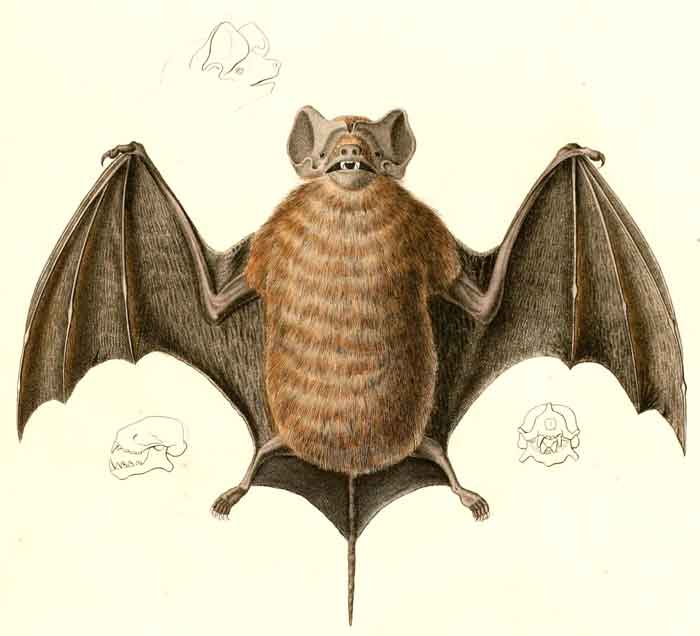Superregnum: Eukaryota
Cladus: Unikonta
Cladus: Opisthokonta
Cladus: Holozoa
Regnum: Animalia
Subregnum: Eumetazoa
Cladus: Bilateria
Cladus: Nephrozoa
Superphylum: Deuterostomia
Phylum: Chordata
Subphylum: Vertebrata
Infraphylum: Gnathostomata
Megaclassis: Osteichthyes
Cladus: Sarcopterygii
Cladus: Rhipidistia
Cladus: Tetrapodomorpha
Cladus: Eotetrapodiformes
Cladus: Elpistostegalia
Superclassis: Tetrapoda
Cladus: Reptiliomorpha
Cladus: Amniota
Cladus: Synapsida
Cladus: Eupelycosauria
Cladus: Sphenacodontia
Cladus: Sphenacodontoidea
Cladus: Therapsida
Cladus: Theriodontia
Cladus: Cynodontia
Cladus: Eucynodontia
Cladus: Probainognathia
Cladus: Prozostrodontia
Cladus: Mammaliaformes
Classis: Mammalia
Subclassis: Trechnotheria
Infraclassis: Zatheria
Supercohors: Theria
Cohors: Eutheria
Infraclassis: Placentalia
Cladus: Boreoeutheria
Superordo: Laurasiatheria
Cladus: Scrotifera
Ordo: Chiroptera
Subordo: Yangochiroptera
Superfamilia: Vespertilionoidea
Familia: Molossidae
Subfamilia: Molossinae
Genus: Molossus
Species: Molossus molossus
Subspecies: M. m. debilis – M. m. fortis – M. m. molossus – M. m. pygmaeus – M. m. tropidorhynchus
Name
Molossus molossus (Pallas, 1766)
Lectotype: larger specimen of Daubenton (in Buffon & Daubenton, 1763, pl. xix fig. 1). [designated by Husson (1962: 251)]
Type locality: “alia specie Americana”, restricted to Martinique, West Indies, by Husson (1962: 251).
Native distribution areas
Sinaloa and Coahuila (Mexico) to Peru, North Argentina, Paraguay, Uruguay, Brazil and Guianas
Greater and Lesser Antilles
Florida Keys (USA)
Margarita Island (Venezuela)
Curaçao and Bonaire (Netherlands Antilles)
Trinidad and Tobago
References
Primary references
Pallas, P.S. 1766. Miscellanea zoologica: quibus novae imprimis atque obscurae animalium species describuntur et observationibus iconibusque illustrantur. Petrum van Cleef: Hagae Comitum. i–xii + 1–224 pp., pl. 1–14. BHL Reference page.
Husson, A.M. 1962. The bats of Suriname. Zoologische Verhandelingen 58(1): 1–282. PDFReference page.
Links
IUCN: Molossus molossus (Least Concern)
Vernacular names
English: Pallas's Mastiff Bat

Molossus molossus molossus
The velvety free-tailed bat [2] (Molossus molossus) is a species of bat found in North, Central, and South America and the Caribbean.
Physical description
M. molossus
The velvety free-tailed bat is a medium-sized bat, with a length of 4 inches (100 mm) and with a wingspan of 11–13 inches (280–330 mm). This species is brown in color; however, when seen flying around at dusk, it will appear to be black. The tail of the velvety free-tailed bat is long and extends beyond the tail membrane. Its ears are large and round.
Feeding
The velvety free-tailed bat forages in open areas, above tree canopies, around forest edges, and around streams and ponds. Its diet includes moths, beetles, and flying ants. It is commonly seen at dusk, where it will fly solo, catching insects in the air.
Distribution and habitat
It occurs in the Americas from Argentina north to Cuba and Mexico and also the Florida Keys in the United States.[1] It is very common in the Caribbean.
A velvety free-tailed bat has been observed being killed by a giant centipede (Scolopendra viridicornis) in the Amazon. The lone bat had been roosting inside a man-made wooden structure in Cristalino State Park before the centipede grabbed it with its legs and injected venom into its neck. This observation is notable due to the rarity of centipede predation on bats.[3]
References
Barquez, R.; Rodriguez, B.; Miller, B.; Diaz, M. (2015). "Molossus molossus". IUCN Red List of Threatened Species. 2015: e.T13648A22106602. doi:10.2305/IUCN.UK.2015-4.RLTS.T13648A22106602.en. Retrieved 11 November 2021.
"Velvety free-tailed bat". Florida Bat Center. 2005. Archived from the original on 2016-10-06. Retrieved 2010-02-07.
Noronha, Janaina da Costa de; et al. (2015). "Predation of bat (Molossus molossus: Molossidae) by the centipede Scolopendra viridicornis (Scolopendridae) in Southern Amazonia". Acta Amazonica. 45 (3): 333–6. doi:10.1590/1809-4392201404083. "The purpose of this study was to report the third record of bat predation by centipedes worldwide, the first record in the Amazon region."
Stokes Beginner's Guide to Bats by Kim Williams, Rob Mies Donald and Lillian Stokes
Retrieved from "http://en.wikipedia.org/"
All text is available under the terms of the GNU Free Documentation License

